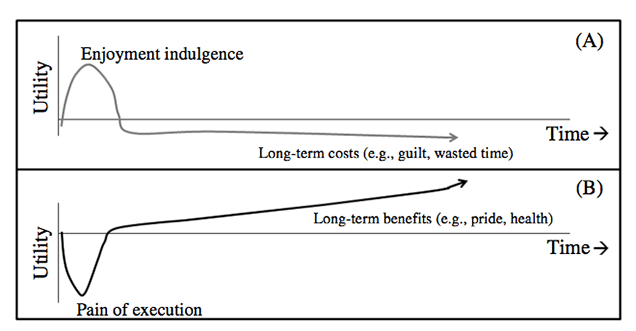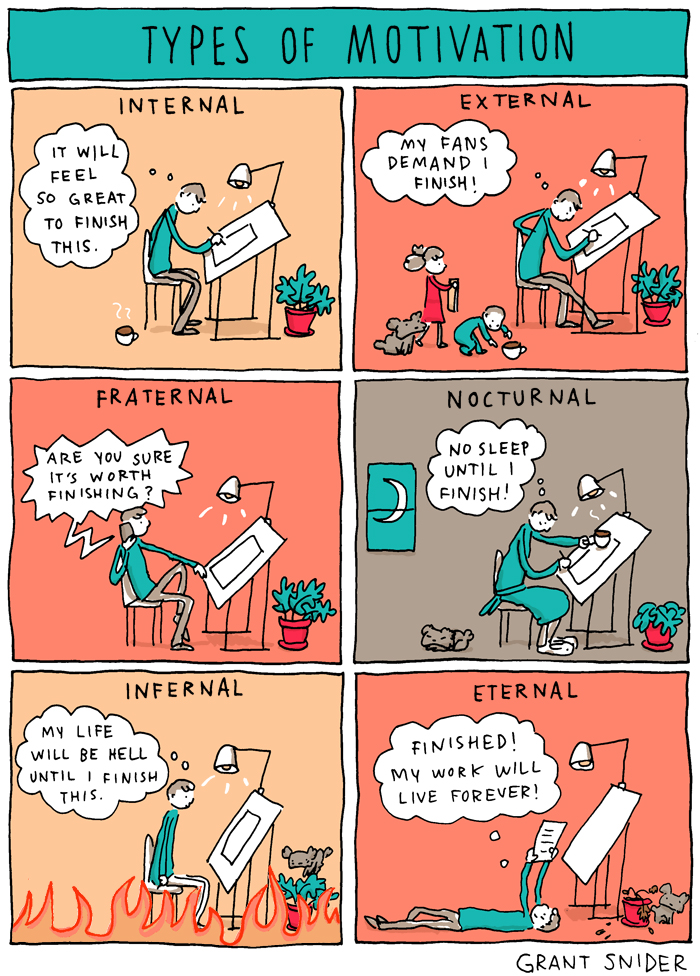I’ll just say it: I hate exercising.
Yes, I understand the health benefits of moving my body regularly. And double yes, I do get that tried and true rush of endorphins once my sweat session is over.
But, the actual act of exercising itself?
Well, I despise it—which means I would consistently put off incorporating it into my daily routine. I would come up with a million excuses for why tomorrow would be a better day for some much-needed physical activity.
That only worked for me (and my waistline) for so long, so I knew I needed to find a way to encourage myself to workout more regularly. That’s when I discovered it, the genius motivation hack that never fails to get my rear in gear: I paired exercise with something that I love.
When I was dying to watch a new season of a show I was obsessed with, I’d only allow myself to power through an episode if I was on the stationary bike.
When I found a podcast I couldn’t get enough of, I made it a rule to only pop in my earbuds and listen if I was on a run or spending some time stretching.
By matching up something I hated with something I couldn’t wait to do, I was able to dangle a carrot in front of my own nose and encourage myself to get moving
I’ve been using this tactic for quite some time, and as it turns out, it’s a real thing. There’s even an “official” name for it: temptation bundling.
A Little Pain For A Lot Of Gain: What Is Temptation Bundling?
A term coined by Katherine Milkman, a behavioral economist and professor at The Wharton School of the University of Pennsylvania, temptation bundling is pretty straightforward: you “bundle” something you enjoy with something you dread.
It’s a concept that Milkman discovered when—much like me—she was trying to find a way to exercise more.
“I struggle at the end of a long day to get myself to the gym even though I know that I should go. And at the end of a long day, I also struggle with the desire to watch my favorite TV shows instead of getting work done,” she said in an interview with Freakonomics Radio. “And so I actually realized that those two temptations, those two struggles I faced, could be combined to solve both problems.”
The gym is a popular example, but it’s certainly not the only area where temptation bundling can be helpful.
Perhaps your favorite playlist is only accessible to you while you’re cleaning the house, or maybe you can only go to that coffee shop with the killer lattes and breakfast sandwiches if you clean out your inbox while you indulge.
Those are examples of temptation bundling too—because you’re combining something you love with something you hate (or, as Milkman describes them, “want” experiences with “should” behaviors).
Why Is Temptation Bundling So Effective?
It makes sense, doesn’t it? And here’s the thing: temptation bundling really does work.
In Milkman’s study of temptation bundling, she split participants into three different groups:
- Full Treatment Condition: Participants were given access to an iPod loaded with four audiobooks of their choosing, which they could only listen to at the gym.
- Intermediate Treatment Condition: Participants were also given access to four audiobooks of their choosing, but these were loaded on to their personal iPods—which meant they could be listened to anywhere.
- Control Condition: Participants were only given a $25 Barnes and Noble gift card at the start of the study.
The results?
During the first seven weeks of the study, the percent of participants who visited the gym at least once per week were 51% in the full treatment condition, but only 44% in the intermediate treatment condition and 42% in the control condition.

So, without a doubt, temptation bundling works.
The restraint to the reward encouraged the full treatment condition participants to get that session of cardio in more often.
But that begs the question: What the heck makes this tactic so effective?
The concept of rewards is likely one of the biggest motivators at play here.
When you’re struggling to find enough internal motivation to tackle something you hate—whether it’s dominating the treadmill or tackling your daunting inbox—an extrinsic reward can be the push you need to stop avoiding that task.
It’s called the Incentive Theory of Motivation, and it suggests that people gravitate toward behaviors that lead to obvious benefits.
You’ve probably also heard ramblings about the importance of dopamine in your own motivation levels. I’ll spare you the detailed neuroscience lesson, but here’s the rub: While some people think dopamine is a neurotransmitter for pleasure, that’s not the case.
Dopamine isn’t actually a feel-good chemical that’s released after we obtain rewards—all of the magic actually happens when we anticipate a reward. Our dopamine spikes, and our motivation follows suit.

That means that when we match up a dopamine-producing activity with something that makes us groan, we not only boost our motivation to finally conquer that dreaded task, but we also make the whole process a little less painful (which means we’re less likely to continue avoiding it!).
Whew! And that’s not all.
The concept of temptation bundling also offers the guarantee of an immediate reward. That’s important, especially for tasks and behaviors that would typically require a long time to produce any sort of direct payoff (ahem, exercise).
One 2018 Cornell study found that more immediate and frequent rewards can improve your intrinsic motivation—meaning there might come a day when I manage to get myself to the gym, even if I don’t have the option to distract myself with my favorite entertainment.
How To Treat Yourself Through Temptation Bundling
Temptation bundling works. But, much like any other productivity hack, it’s not a magic pill—it needs to be done right.
Let’s talk about a couple of important ground rules to ensure you make the most of temptation bundling.
1. Find The Right Activities
One of the biggest challenges is finding the right tasks that you can match up.
For starters, as the Incentive Theory of Motivation dictates, the “want” behavior you choose needs to be motivating, meaning it needs to be something that you feel driven to actively pursue.
However, you also need to be careful that the two tasks you pair up don’t conflict with each other. You’ve probably heard that multitasking is impossible. That’s not completely true, it’s just that the two activities can’t be competing for the same mental resources.
In a study published in Psychological Science (Vol. 12, No. 2) by Eric H. Schumacher, Ph.D. of the University of California, Berkeley, three different experiments concluded that people can indeed do two different tasks at once—particularly those that are practiced and don’t physically conflict with one another—without much interference.
This way, temptation bundling deepens your time and motivation, rather than constantly demanding that you switch your attention.
Your best bet is to make a list of all of the activities you love, and then a separate list of tasks you dread.
Start to see what ones might complement each other well—whether it’s having your weekly chat with a long-distance friend while organizing a drawer or cabinet, or cleaning out your inbox while munching on a favorite snack.
2. Stick With It
Another challenge with temptation bundling is that you need to be committed enough to follow your own rules. In order for it to be effective, you really can’t allow yourself to indulge in that reward unless you’re doing the prescribed “should” behavior.
I won’t sugarcoat it: That requires quite a bit of self control.
But, you can do it! Stick with it. The more it becomes part of your routine, the more those two activities will start to be associated with each other in your brain.

Source: Incidental Comics
Temptation Makes For Powerful Motivation
So, now you know my dirty secret: I essentially need to bribe myself to get on the treadmill.
As Milkman explains in her research, this temptation bundling technique is really a win-win:
“Our research indicates that temptation bundling devices have potential for solving two problems at once. Increasing engagement in desirable behaviors for which people often lack willpower while simultaneously allowing them to enjoy pleasurable activities guilt free.”
Hey, it works, and I recommend you give it a try to conquer any tasks that are frequently relegated to the very bottom of your own priority list.







































